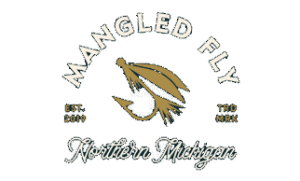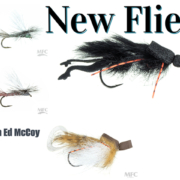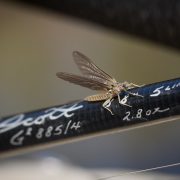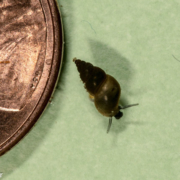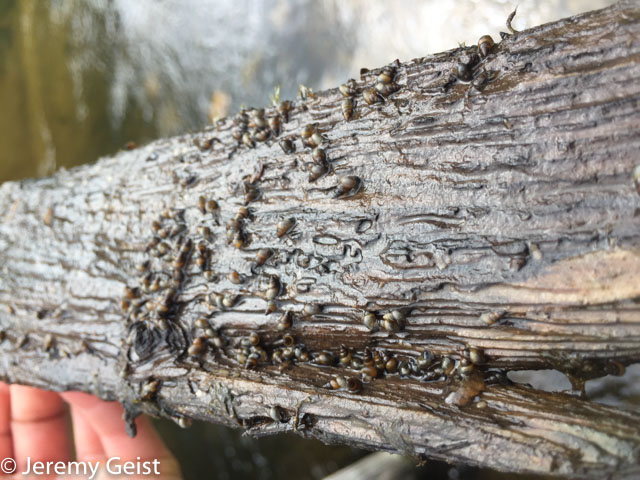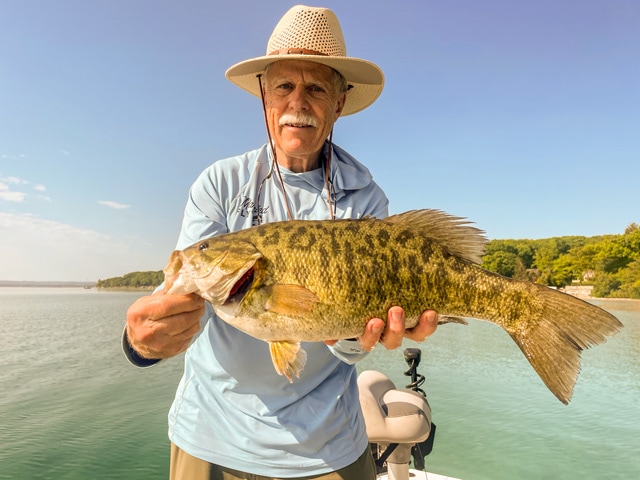Upper Manistee River Tree Drop Update
Yellow Trees
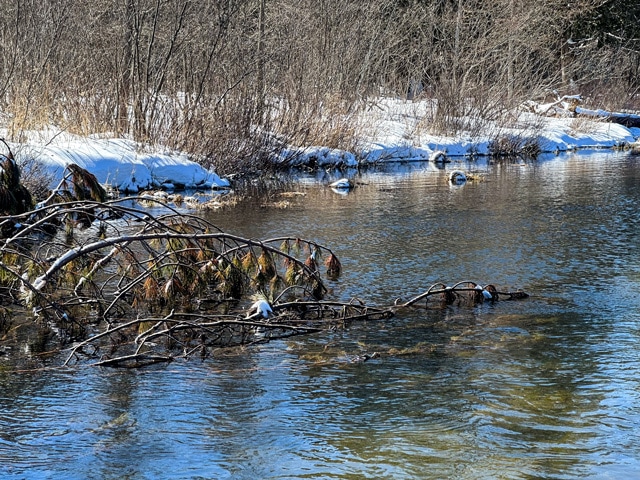
I recently had the opportunity to float below Yellow Trees and take a look at what impacts the tree drop had within that section. In September of 2022 Michigan Trout Unlimited helicoptered in almost 200 whole trees and placed them strategically throughout the river between Yellow Trees and Rogers Landing access sites. This was a prescribed woody debris addition through a collaborative habitat rehabilitation project lead by Michigan TU with assistance from several governmental agencies and private donors. I have been patiently waiting to see what the outcome of this wood addition would look like.
As many of you know, the Upper Manistee River is suffering from systemic habitat decline resulting from several external factors and from years of hands off management practices. The scope of this project is one of the largest wood additions we have seen within the watershed. My hope was that the added trees would help the river to cut down again as opposed to the widening stream width we have observed over the past decade. My first impression was mostly positive as we floated into the section where the majority of the trees were placed.
Desired Outcomes
There were several aspects I was hoping to observe in the areas where the trees were placed. Increasing depth and scour, silt bed formations in the calm water behind the trees, exposing woody debris on the stream bottom, and funneling the current to the middle of the river channel. To my surprise all four of these conditions were being created by the new wood additions. To me these conditions I have described are what makes the Upper Manistee River unique and slightly different from other trout streams in Michigan. Most of these attributes were declining or have become completely absent in this section during the past ten years.
Depth and Scour
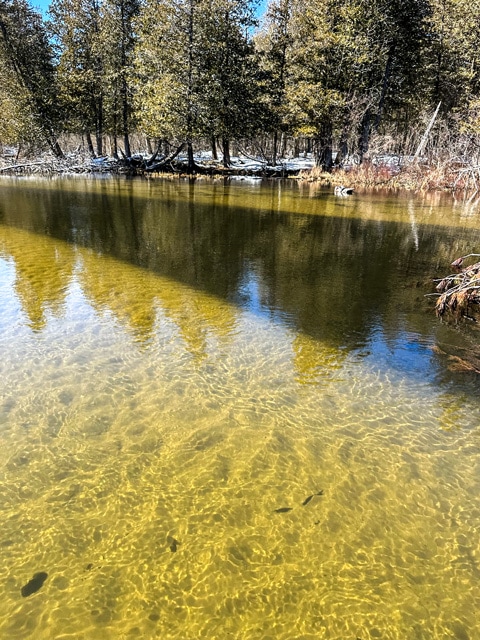
I would say that 90% of the areas that woody debris was placed in the river went through some sort of change. There were a couple of stream reaches where the depth had more than doubled around the new wood. Increasing stream depth is important for several reasons. Deeper water is more stable from temperature change, this is something that has been lost over recent years as water temperatures in that section are quite volatile and can change by as much as 8-12 degrees in a 24 hour period. Deep water habitat is also critical for large trout abundance and overall population dynamics within a stream. The more suitable places there are for trout to live equals more trout, it’s a pretty simple concept.
Silt Beds
Sand has always been an issue on the Upper Manistee River, but it is even a bigger problem today in our ever changing environment with the current hands off approach. Overall, the erosional issues we dealt with in the past have been lessened to a certain degree by other projects focusing on this problem. However, rain events have changed how the river behaves during high and low flow periods. As the river began to cut out (or widen) instead of cutting down (or deepening) the sand bed load was continuing to increase. As a result the majority of the large silt beds that previously lined the river edge were filled in by sand. As we floated through the treated section it was eye opening to see how much new silt has already collected behind the trees and in the calm water in between tree placements. This is good news for burrowing insects like the Brown Drake and Hex.
Exposing More Wood
One habitat aspect of the Upper Manistee River that makes it unique is the amount of large woody debris that lines the stream bottom. As a result of the extensive logging that occurred over a century ago the volume of large woody debris trapped in the stream channel and buried by sand is mind blowing. This is one habitat variable that has been buried with time. There were a couple of reaches where multiple tree placements have exposed some of that buried wood. This was one of the habitat aspects I was really hoping to see maximized as a result of this project. Exposing more of this lateral woody habitat will only increase the amount of cover in the stream and create more favorable ambush sites for more fish to utilize. It’s a “more bang for your buck” scenario and will provide more cover for larger fish as well.
Channelizing Flow
Overall my first impression is mostly positive. The current appears to be funneling more to the middle of the treated areas and with some high water events more scouring should occur only improving the overall habitat conditions in this section. I believe the value of this work will continue to improve the overall stream health as we move forward. More work needs to be continued in reaches upstream and downstream of the Yellow Trees section. Some of the treated areas will need to have additional woody structures added to see the desired outcomes, but overall it’s a great start to mitigating years of neglect. The positive take home message here is that most of this change has occurred during low flow periods and we are just now entering our spring runoff period.
Ed McCoy
